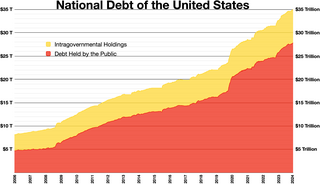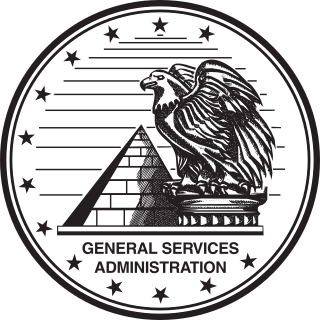
usaspending.gov is a database of spending by the United States federal government.

usaspending.gov is a database of spending by the United States federal government.
Around the time of the Act's passage, OMB Watch, a government watchdog group, was developing a site that would do essentially everything the legislation required. [1] Gary Bass, director of OMB Watch, contacted Robert Shea, associate director of the OMB, offering to help with development of the new site. Shea was initially reluctant to collaborate with Bass, in part because OMB Watch is typically critical of the OMB, but eventually it was determined that the government site would be based on what OMB Watch was developing, with the group being paid $600,000 for their technology. [1] As of early 2008, the government's site offered the same data, API, and (for the most part) documentation as the OMB Watch site, fedspending.org.
The Federal Funding Accountability and Transparency Act of 2006 delegated responsibility for creating the website to the Office of Management and Budget. On May 9, 2017, Steven Mnuchin, the United States Secretary of the Treasury, announced that he updated the site, providing a much broader view of government spending. [2]
It has been reported that the 2011 United States federal budget holds a substantial reduction in funding for the Electronic Government Fund, from which USASpending.gov draws its funding. [3]

The Office of Management and Budget (OMB) is the largest office within the Executive Office of the President of the United States (EOP). OMB's most prominent function is to produce the president's budget, but it also examines agency programs, policies, and procedures to see whether they comply with the president's policies and coordinates inter-agency policy initiatives.

The Department of the Treasury (USDT) is the national treasury and finance department of the federal government of the United States, where it serves as an executive department. The department oversees the Bureau of Engraving and Printing and the U.S. Mint. These two agencies are responsible for printing all paper currency and minting coins, while the treasury executes currency circulation in the domestic fiscal system. The USDT collects all federal taxes through the Internal Revenue Service; manages U.S. government debt instruments; licenses and supervises banks and thrift institutions; and advises the legislative and executive branches on matters of fiscal policy. The department is administered by the secretary of the treasury, who is a member of the Cabinet. The treasurer of the United States has limited statutory duties, but advises the Secretary on various matters such as coinage and currency production. Signatures of both officials appear on all Federal Reserve notes.

The national debt of the United States is the total national debt owed by the federal government of the United States to Treasury security holders. The national debt at any point in time is the face value of the then-outstanding Treasury securities that have been issued by the Treasury and other federal agencies. The terms "national deficit" and "national surplus" usually refer to the federal government budget balance from year to year, not the cumulative amount of debt. In a deficit year the national debt increases as the government needs to borrow funds to finance the deficit, while in a surplus year the debt decreases as more money is received than spent, enabling the government to reduce the debt by buying back some Treasury securities. In general, government debt increases as a result of government spending and decreases from tax or other receipts, both of which fluctuate during the course of a fiscal year. There are two components of gross national debt:
The United States budget process is the framework used by Congress and the President of the United States to formulate and create the United States federal budget. The process was established by the Budget and Accounting Act of 1921, the Congressional Budget and Impoundment Control Act of 1974, and additional budget legislation.

The General Services Administration (GSA) is an independent agency of the United States government established in 1949 to help manage and support the basic functioning of federal agencies. GSA supplies products and communications for U.S. government offices, provides transportation and office space to federal employees, and develops government-wide cost-minimizing policies and other management tasks.

The United States budget comprises the spending and revenues of the U.S. federal government. The budget is the financial representation of the priorities of the government, reflecting historical debates and competing economic philosophies. The government primarily spends on healthcare, retirement, and defense programs. The non-partisan Congressional Budget Office provides extensive analysis of the budget and its economic effects. CBO estimated in February 2024 that Federal debt held by the public is projected to rise from 99 percent of GDP in 2024 to 116 percent in 2034 and would continue to grow if current laws generally remained unchanged. Over that period, the growth of interest costs and mandatory spending outpaces the growth of revenues and the economy, driving up debt. Those factors persist beyond 2034, pushing federal debt higher still, to 172 percent of GDP in 2054.

The Federal Funding Accountability and Transparency Act of 2006 is an Act of Congress that requires the full disclosure to the public of all entities or organizations receiving federal funds beginning in fiscal year (FY) 2007. The website USAspending.gov opened in December 2007 as a result of the act, and is maintained by the Office of Management and Budget. The Congressional Budget Office estimates S. 2590 will cost $15 million over its authorized time period of 2007–2011.
Baseline budgeting is an accounting method the United States Federal Government uses to develop a budget for future years. Baseline budgeting uses current spending levels as the "baseline" for establishing future funding requirements and assumes future budgets will equal the current budget times the inflation rate times the population growth rate. Twice a year—generally in January and August—CBO prepares baseline projections of federal revenues, outlays, and the surplus or deficit. Those projections are designed to show what would happen if current budgetary policies were continued as is—that is, they serve as a benchmark for assessing possible changes in policy. They are not forecasts of actual budget outcomes, since the Congress will undoubtedly enact legislation that will change revenues and outlays. Similarly, they are not intended to represent the appropriate or desirable levels of federal taxes and spending.
The Committee for a Responsible Federal Budget (CRFB) is a non-profit public policy organization based in Washington, D.C. that addresses federal budget and fiscal issues. It was founded in 1981 by former United States Representatives Robert Giaimo (D-CT) and Henry Bellmon (R-OK), and its board of directors includes former Members of Congress and directors of the Office of Management and Budget, the Congressional Budget Office and the Federal Reserve.

The Australian government debt is the amount owed by the Australian federal government. The Australian Office of Financial Management, which is part of the Treasury Portfolio, is the agency which manages the government debt and does all the borrowing on behalf of the Australian government. Australian government borrowings are subject to limits and regulation by the Loan Council, unless the borrowing is for defence purposes or is a 'temporary' borrowing. Government debt and borrowings have national macroeconomic implications, and are also used as one of the tools available to the national government in the macroeconomic management of the national economy, enabling the government to create or dampen liquidity in financial markets, with flow on effects on the wider economy.

Shelley Hope Metzenbaum is an American nonprofit executive, academic, and former government official specializing in public sector performance management. She was the founding president of the Volcker Alliance and worked in the Office of Management and Budget during the Obama administration. Metzenbaum is a fellow of the National Academy of Public Administration.

The Digital Accountability and Transparency Act of 2013 aims to make information on federal expenditures more easily available, accessible, and transparent. The bill would change reporting requirements about financial data and start a pilot program to research best practices. The bill was introduced in the House during the 113th United States Congress.

The Federal Information Technology Acquisition Reform Act made changes to the ways the U.S. federal government buys and manages computer technology. It became law as a part of the National Defense Authorization Act for Fiscal Year 2015 (Title VIII, Subtitle D, H.R. 3979.

The Taxpayers Right-To-Know Act is a bill that would require government agencies to identify and describe each program they administer, the cost to administer those programs, expenditures for services, the number of program beneficiaries, and the number of federal employees and contract staff involved. It would also require information on how the program gets evaluated.

The Budget and Accounting Transparency Act of 2014 is a bill that would modify the budgetary treatment of federal credit programs. The bill would require that the cost of direct loans or loan guarantees be recognized in the federal budget on a fair-value basis using guidelines set forth by the Financial Accounting Standards Board. The bill would also require the federal budget to reflect the net impact of programs administered by Fannie Mae and Freddie Mac. The changes made by the bill would mean that Fannie Mae and Freddie Mac were counted on the budget instead of considered separately and would mean that the debt of those two programs would be included in the national debt. These programs themselves would not be changed, but how they are accounted for in the United States federal budget would be. The goal of the bill is to improve the accuracy of how some programs are accounted for in the federal budget.

The Digital Accountability and Transparency Act of 2014 is a law that aims to make information on federal expenditures more easily accessible and transparent. The law requires the U.S. Department of the Treasury to establish common standards for financial data provided by all government agencies and to expand the amount of data that agencies must provide to the government website, USASpending. The goal of the law is to improve the ability of Americans to track and understand how the government is spending their tax dollars.
The United States Federal Budget for fiscal year 2016 began as a budget proposed by President Barack Obama to fund government operations for October 1, 2015 – September 30, 2016. The requested budget was submitted to the 114th Congress on February 2, 2015.
The 2017 United States federal budget is the United States federal budget for fiscal year 2017, which lasted from October 1, 2016 to September 30, 2017. President Barack Obama submitted a budget proposal to the 114th Congress on February 9, 2016. The 2017 fiscal year overlaps the end of the Obama administration and the beginning of the Trump administration.

The United States federal budget for fiscal year 2018, which ran from October 1, 2017, to September 30, 2018, was named America First: A Budget Blueprint to Make America Great Again. It was the first budget proposed by newly elected president Donald Trump, submitted to the 115th Congress on March 16, 2017.

The United States federal budget for fiscal year 2023 runs from October 1, 2022, to September 30, 2023. The government was initially funded through a series of three temporary continuing resolutions. The final funding package was passed as an omnibus spending bill, the Consolidated Appropriations Act, 2023.